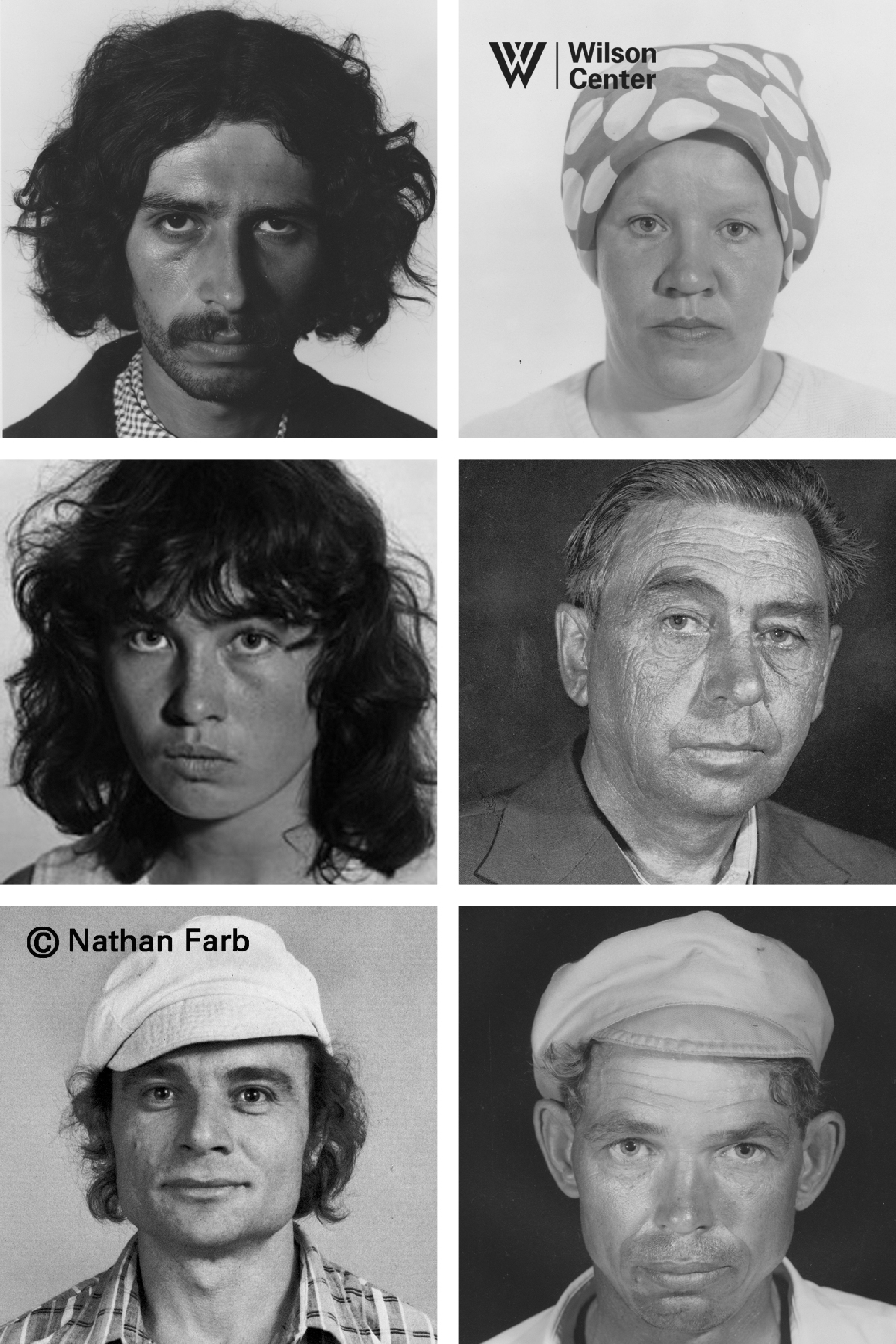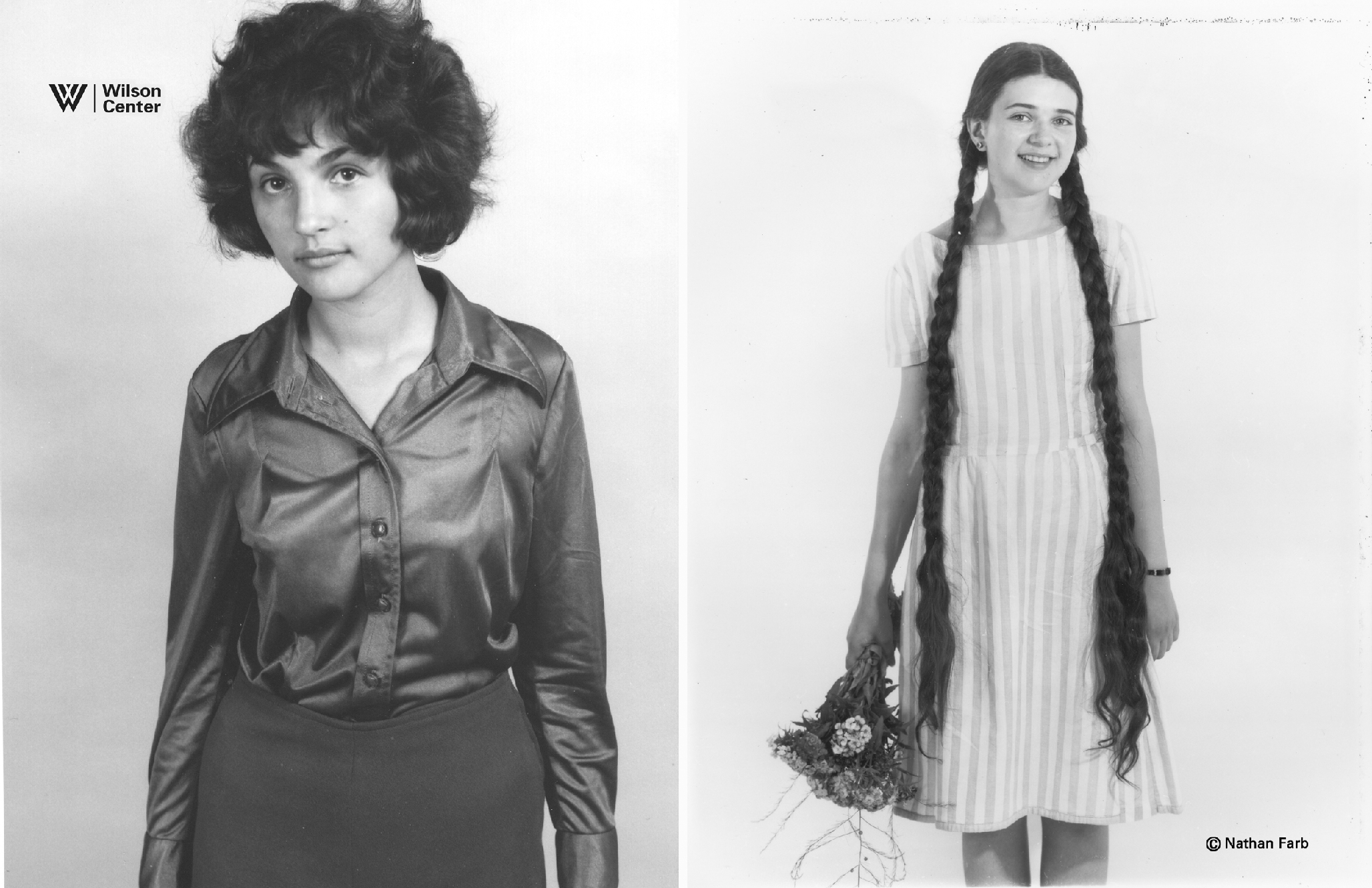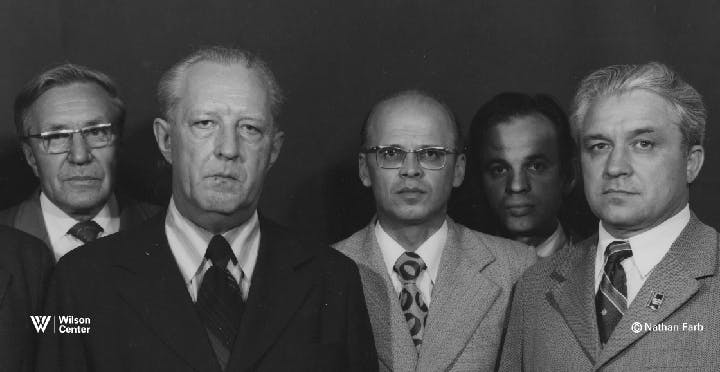Fall 2016
Portraits from the Détente Era
– Nathan Farb and Izabella Tabarovsky
Nathan Farb traveled to Novosibirsk with the United States Information Agency’s (USIA) Photography USA exhibit in 1977 and returned with several hundred studio portraits – a unique collection of images from a country that was United States’ greatest enemy.

When I was in school, images coming out of Russia were very, very limited. The New York Times had a correspondent, Harrison Salisbury, whose work I read religiously, and AP had a correspondent in Russia, but that was all. And the stuff that came out of the American press at the same time was all about people in shadows, in dark rooms, the refuseniks...
Then the United States Information Agency (USIA) started sending a big show of American photography to the Eastern Bloc, kind of testing it out before they sent it to Russia. And they included a photographer to photograph people at the exhibit and show off technology. They were choosing people who were quite well-known photographers, sometimes National Geographic photographers and such. And I was young, I was 31-32.
I’d traveled around Romania for about 6 weeks, then in Yugoslavia for 6 weeks, and also for a short time in Bulgaria. I read about the show going to Romania, and I wrote to the USIA and begged them to let me go. I must have sent them some of my published work from the Romanian trip. They were intrigued by the letter I wrote and put me on the alternate list. Then some very well-known guy dropped out and I got to go.
I did a good job for them, I entertained people and enjoyed myself. Then I once again begged them to let me go to Russia. By then I was older and more established, so they put me on the main list to go to Russia.
I decided that if I went to Russia, I didn’t want to go to the capital city. I wanted to see something akin to what we call Middle America. Novosibirsk was my choice. To me it looked like it might be an equivalent of Cleveland – an industrial city yet with a big symphony hall, culture as well. So I said, well, Novosibirsk looks like the right place for me.
* * *

I realized that through a collection of individual portraits, I could, perhaps, structure something like a portrait of the society that would be revealing about how things were.
There was a great German photographer, August Sander. I used his work as an intellectual framework. He photographed German people in the 1930s. And each portrait was fabulous, but the entire collection really gave you an understanding of what the German culture was like. So I was using that as a framework even though I was confined to a studio. But in some ways, having confinement makes you distill what you’re doing even better. It lays down some rules you follow, which actually give you greater freedom.

I worked with a Polaroid that had a negative as well. People didn’t really understand that. Even the technical people didn’t understand it. Polaroid never really perfected it, but I understood how to make the negatives work. They were so delicate that they would almost destroy themselves. And preserving them so that you actually had the negative was the hard part. And I figured out how to handle them so they were usable. I’d worked with it for a couple of years before I went to Russia and experimented with doing street portraits in New York City.

There was a big crowd watching me all the time in Novosibirsk. I had easily several hundred people at any given moment wanting to be photographed. Sometimes people would come back day after day wanting me to choose them. I learned to hold up the Polaroid after each new picture, and the crowd would pass judgment on the image telling me if I had good representation. They would chant, “Khorosho!” (“Good!”) or “Nyet! “ (“No!)
I didn’t really know where I was going with it. But I was working every day. I was doing maybe about 30-40 portraits a day, and I was also trying to entertain the crowd. That was my job – to show an American photographer at work. John Beyrle, who was a guide on the exhibit and later became an ambassador to Russia, said recently: “We all knew that Nathan was doing something very different than the other photographers who traveled with the exhibit to other cities.”

My take on things is very personal. And some of these photographs are so personal.
Picking people out to be photographed was partly instinct. I was trying to choose what I felt was a cross-section.
One day, several party chiefs came to see the show [pictured in the masthead of this article]. And I said to the American guy who was the head of the show: You gotta get these guys in my studio. And I took several pictures and I handed each one a Polaroid to take home.

One of the really surprising things was how many really attractive women there were. Or that they were somewhat fashionable even. In the West we really didn’t understand that. The American impression of the communist world was that it was very strict, very rigid, and boring. I remember, sometimes, I would choose another beautiful woman, and the crowd would say – it would be translated to me – “That’s all he chooses, beautiful women. Forget it, you’re never gonna get chosen.”
Interview by Izabella Tabarovsky
* * *
Read about the Photography USA exhibit and its legacy on both sides of the Iron Curtain. Learn more about the exhibits' guides and read their recollections here.
* * *
Nathan Farb is an acclaimed, New York-based photographer and multimedia artist. His work has been shown at MoMA and museums throughout the world. His book,"The Russians," was published in France, Germany, Holland, Italy, and the United States.
